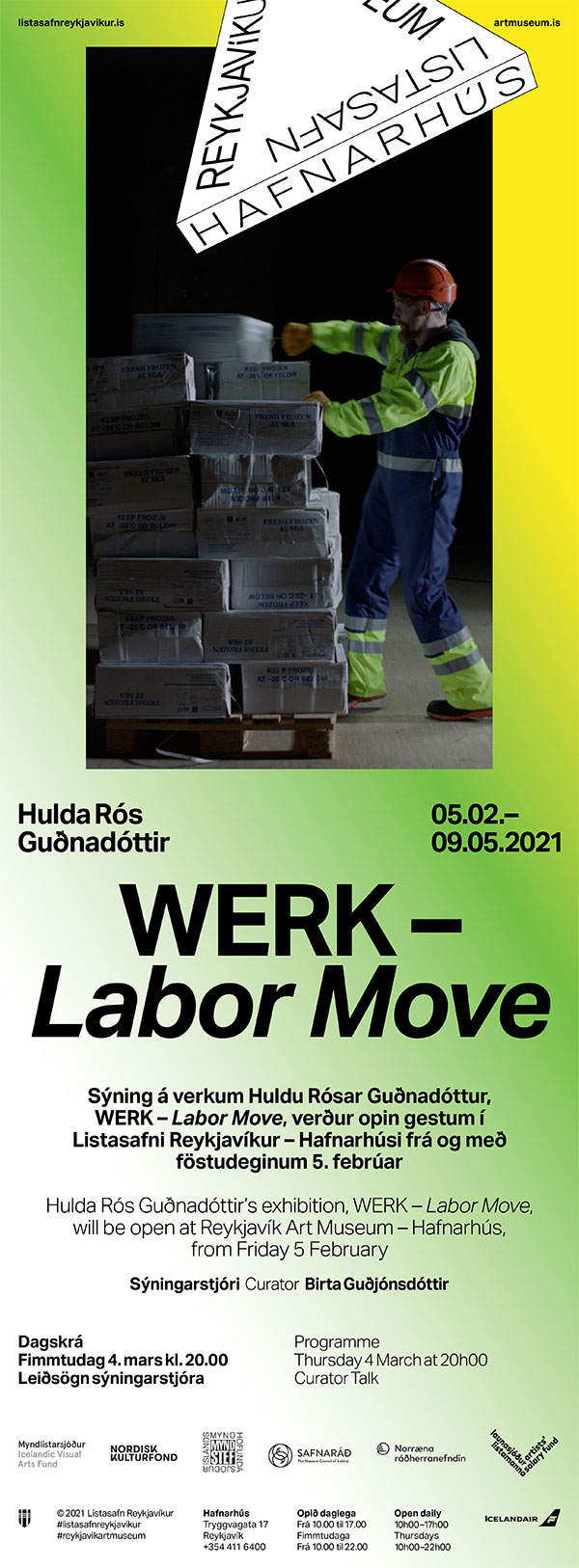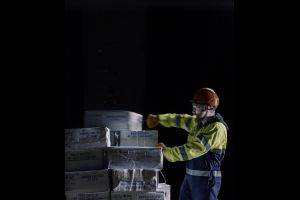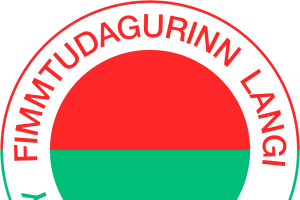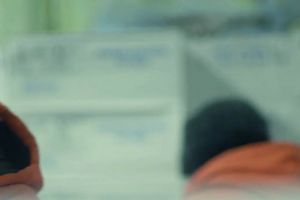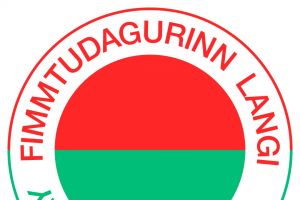Choose year
Hulda Rós Guðnadóttir: WERK – Labor Move
In her solo exhibition at Reykjavík Art Museum - Hafnarhús, Hulda Rós Guðnadóttir focuses on social issues in a site-specific installation.
The installation WERK - Labor Move is made especially for the museum’s main hall as the building Hafnarhús was originally built as a warehouse on the quay.
The work consists of a three-channel filmic work, Labor Move; sculptures, directly related to the filmic work; and a video recording of the assembling of the sculptures in the building in the run-up to the exhibition opening.
The exhibition is based on an examination of the functioning of the multi-layered global economy, and the perspective of the familiar, the local, is used to analyse and project a connection with the global.
The three-channel filmic work Labor Move is the centre point of the installation. It has been shown before in Guðnadóttir’s solo exhibitions, e.g. at the Meetfactory in Prague in a three-artist exhibition, at the Kunstkraftwerk exhibition space in Leipzig, and at the Künstlerhaus Bethanien in Berlin, and this exhibition marks its premiere in the Nordic countries. In the work, as well as in the installation, parallels in the manual labor which went one in this building before are examined in the context of the gentrification process of the port area and similar development around the world. Hafnarhúsið is the first building by Reykjavík Harbour to be given a new role as a building for art and cultural activities and has become characteristic of the area, similar to the development of harbour areas everywhere.
In the filmic work, we see several dockworkers performing specifically for the camera, based on movements they have become accustomed to over a long period of time while unloading boxes of frozen fish from within the hull of the first trawler and over to the quayside at Reykjavík Harbour. The same movements are repeated, they throw heavy boxes from one place to another with considerable coordination and skill.
Labor Move is an art work in itself, but also a documentation in film and sound about the 48-hour performance of the dockers in front of viewers in the exhibition space in Leipzig in 2016. The 48-hour duration of the performance is the same time as the dockworkers usually have to unload the fish from a freezer trawler.
The film is the result of Guðnadóttir’s collaboration with the dockworkers which lasted for several years. Until recently, these same workers worked on the quayside, near Hafnarhús, and also appeared in her filmic work Keep Frozen. In 2016, when the film premiered, the dockworkers did a performance in which they moved a sculpture from the ocean floor by the wharf to the ASÍ Art Museum (Art Museum of the Icelandic Confederation of Labor), in Reykjavík and placed it in the centre of Guðnadóttir’s installation, which was opened that evening. The dockworkers also performed in Þoka Gallery as part of her exhibition at the Reykjavík Art Festival in 2014, where they recited original poetry about their own work environment, fish-landing poetry.
Keep Frozen will be screened in Hafnarhús during the exhibition period. It has been nominated for awards at numerous film festivals around the world and been distributed in art cinemas in Germany and was shown as a solo exhibition at the Berlinische Galerie in Berlin in 2018.
Hulda Rós Guðnadóttir (b. 1973) grew up and lived in Reykjavík before moving to Berlin in 2009, where she has lived since. After receiving a BA in anthropology and an MA in interactive design, she began studying art at the Iceland Academy of the Arts from where she graduated in 2007. Guðnadóttir has received various awards for film and art, e.g. a grant from the Guðmunda S. Kristinsdóttir Art Fund in 2019 and the Penninn Art Award for aspiring artists in 2008, and her work has also been nominated for several other awards. Her works have been exhibited in art museums and public exhibition spaces around the world, most recently e.g. solo exhibitions at the Künstlerhaus Bethanien, at the Berlinische Galerie and a premiere of her filmic work at the Savvy Contemporary 2019 in Berlin. Her most recent exhibition in Iceland was participation in Across the Golden Bridge, a part of the Icelandic Sculptors Society’s exhibition series in Reykjavík in 2020.
In connection with Guðnadóttir´s exhibition, an international symposium will be held on the position of work on the boundaries of art and filmmaking, on one hand, and on the other the work of visual artists who focus on social issues in their filmic work.







Click on the pictures to view some more on Instagram and post your own by using the #hashtag of the exhibition.
Remember to follow Reykjavík Art Museum on @reykjavikartmuseum.

